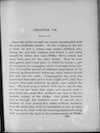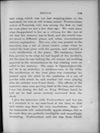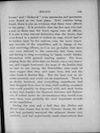Tooktoocheer and her son Ogzeuckjeuwock tell Schwatka of finding Franklin goods and dead bodies [as reported by Gilder] (1881)
From this point onward our march was attended with the most profitable results. On the evening of the 4th of June we met a young man, named Adlekok, who, during the previous summer, had found a new cairn erected by white men near Pfeffer River, which had never been seen by any other Inuits. Near by were three graves and a tent place in which he found a pair of wire-gauze snow-goggles, which we bought from him. This information seemed of sufficient importance to be followed up immediately before any other natives should find and rob the cairn. Consequently the next day Lieutenant Schwatka and I took a light sled, with Toolooah to drive and Adlekok as guide, and visited the spot. We took a day's rations with us, to use in case we did not get back that night, and started with a head wind and storm that confined our view to the immediate vicinity of the sledge. Our guide, however, took us through this trackless waste of smooth ice, a distance of over twenty-five miles, without deviation from the direct line, with no landmarks or sun to steer by; but on he went with the unerring instinct of a dog, until we struck the land at the western banks of Pfeffer River. Arrived at the cairn we found it as he said, "a white man's cairn" unmistakably, but before proceeding to take it down we examined it carefully and found scratched on a clay stone with the point of a sharp instrument,
H MAY XII 1869
And on the opposite side,
ETERNAL HONOUR TO THE DISCOVER-
ERS OF THE NORTH WE-
and knew it to be the cairn erected by our countryman, Captain Hall, over the bones of two of Franklin's men which he speaks of having found here. A portion of the inscription was lost by the breaking off of a piece of the stone on which it was written. We did not take down the monument, but after making a hasty sketch, returned to camp, having travelled over fifty miles in ten hours.
At this camp we found another interesting relic, in a pine board that seems to have been part of the head of a bunk or other permanent fixture, and has the initials "L. F." in brass tacks upon it. This was picked up on the west coast of Adelaide Peninsula, near where the ship went down that drifted through Victoria Strait, and may serve to identify that vessel, thus proving a most interesting and valuable historic relic. At the next camp, which was our last stopping-place on the main-land, we met an old woman named Tooktoocheer, widow of Pooyetah, who was among the first to visit the boat place we saw a few days ago. We were somewhat disappointed in her as a witness, for she was so old that her memory was at fault, and she would wander about to different places and relate circumstances without explanation. Her son, who was present at the interview, was a lad of about twelve years when he visited the boat place with his parents, and retained a vivid recollection of the place. His testimony, therefore, proved to be what we had hoped of his mother's. All the time he was talking the old woman sat nodding approval as the circumstances he was relating were recalled to her memory. His name is Ogzeuckjeuwock, and he is an aruketko, or medicine-man, in his tribe. The recollection of the boat place was somewhat impressed upon his mind by the explosion of a can of powder with which he and another lad were playing after the articles were found there. The effects of the explosion came near proving fatal at the time, and when I met him during the fall on King William Land, he told me he had never entirely recovered from the shock.
I give the interview with Tooktoocheer and her son as I recorded it in my note-book at the time, so that each reader may draw his own conclusions. Some of the statements will undoubtedly appear strange, but in the main they are perfectly intelligible and exceedingly interesting. Tooktoocheer said she was from Okbillegeok (Pelly Bay of the charts), a portion of the Netchillik country. She is the widow of Pooyetah, spoken of by Sir John Ross and Captain Hall. She appeared to be about seventy years old, and was an object of high esteem by her people, as was evinced in the care that was bestowed upon her comfort. She said she had never seen any of Franklin's men alive, but saw six skeletons on the main-land and an adjacent island — four on the main-land and two on the island. This she pointed out on the southern coast near ninety five degrees west longitude. There were no graves at either place. Her husband was with her at the time, and seven other Inuits. This was when she was at the boat place west of Richardson Point. In fact, she seemed to have the two places somewhat mixed up in her mind, and Ogzeuckjeuwock took up the thread of the narrative here. In answer to a question which we asked his mother, he said he saw books at the boat place in a tin case, about two feet long and a foot square, which was fastened, and they broke it open. The case was full. Written and printed books were shown him, and he said they were like the printed ones. Among the books he found what was probably the needle of a compass or other magnetic instrument, because he said when it touched any iron it stuck fast. The boat was right side up, and the tin case in the boat. Outside the boat he saw a number of skulls. He forgot how many, but said there were more than four. He also saw bones from legs and arms that appeared to have been sawed off. Inside the boat was a box filled with bones ; the box was about the same size as the one with the books in it.
He said the appearance of the bones led the Inuits to the opinion that the white men had been eating each other. What little flesh was still on the bones was very fresh ; one body had all the flesh on. The hair was light ; it looked like a long body. He saw a number of wire snow-goggles, and alongside the body with flesh on it was a pair of gold spectacles. (He picked out the kind of metal from several that were shown him.) He saw more than one or two pairs of such spectacles, but forgot how many. When asked how long the bodies appeared to have been dead when he saw them, he said they had probably died during the winter previous to the summer he saw them. In the boat he saw canvas and four sticks (a tent or sail), saw a number of watches, open-faced ; a few were gold, but most were silver. They are all lost now. They were given to the children to play with, and have been broken up and lost. One body — the one with flesh on — had a gold chain fastened to gold ear-rings, and a gold hunting-case watch with engine-turned engraving attached to the chain, and hanging down about the waist. He said when he pulled the chain it pulled the head up by the ears. This body also had a gold ring on the ring finger of the right hand. It was taken off, and has since been lost by the children in the same way that the other things were lost. His reason for thinking that they had been eating each other was because the bones were cut with a knife or saw. They found one big saw and one small one in the boat; also a large red tin can of smoking tobacco and some pipes. There was no cairn there. The bones are now covered up with sand and sea-weed, as they were lying just at high-water mark. Some of the books were taken home for the children to play with, and finally torn and lost, and others lay around among the rocks until carried away by the wind and lost or buried beneath the sand.
His statement in reference to one of the deceased wearing a watch by a chain attached to his ears appears strange, but I give the statement as he made it. The chain may in some way have become attached to the ears, or, ridiculous as the story sounds, there may have been some eccentric person in the party who wore his watch in that way, and if such should prove to be the case, this would certainly identify him beyond doubt. While the old woman sat in our igloo giving her statement, or trying to recollect the circumstances, I succeeded in getting a good portrait sketch of her, which attracted considerable interest among the natives, and Ogzeuckjeuwock, who toward the latter part of the interview had begun to exhibit symptoms of impatience, turned quickly around as soon as he had finished, and asked to have his portrait taken also, in which I accommodated him, much to his gratification.
In reviewing the testimony of the foregoing witnesses it appears confirmatory of the opinion that the skeletons found at this place were the remains of some of the party who were seen by Ahlangyah and her friends on Washington Bay. She said that "Toolooah," "Agloocar," and "Doktook" wore spectacles, and spectacles were found at the boat place. Gold watches being found, there is also an evidence that there were officers in the party. It is probable that the five men who had a tent on shore near the Inuit tupics were all officers. It is also a very natural deduction that the books that were found in a sealed or locked tin case, which had to be broken open by the natives, were the more important records of the expedition, and in charge of the chief surviving officers, as it is not probable that men who were reduced to the extremity that these were, and having to drag everything by hand, would burden themselves with general reading matter. The boat, judging from the relics that we found, was a very heavy one, and copper bottomed ; for most of the kettles that we saw in use among the Netchilliks were made of sheet copper that they said came from this and the other boats in Erebus Bay. But the boat was an absolute necessity and could not be abandoned. There is no doubt, however, that everything superfluous had been dropped from time to time, until nothing remained that could possibly be dispensed with, and such books as they had, besides the Nautical Almanac and Ephemeris, if indeed under the circumstances they would even carry them, were probably the most important records of the expedition.









